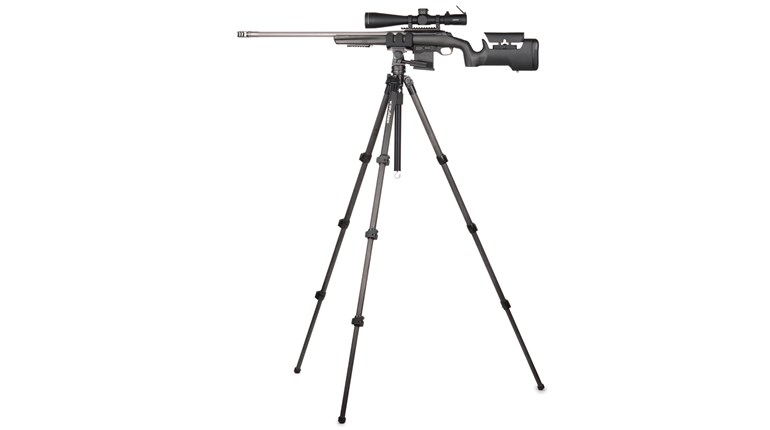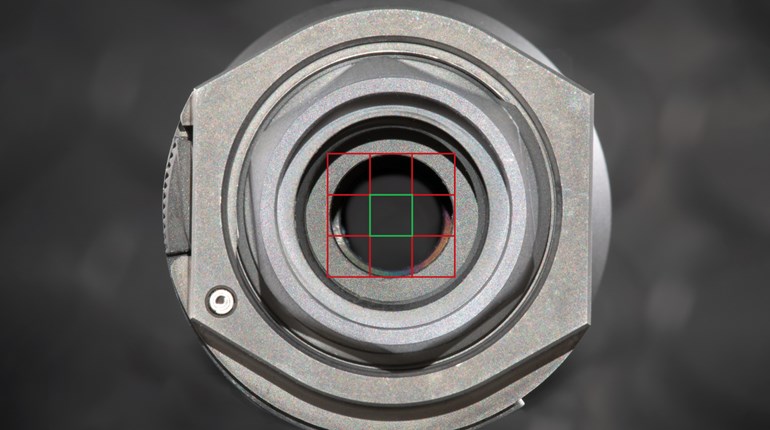
AR uppers can be swapped in seconds, allowing consumers to have quick-change, multi-caliber platforms.
New catch words and phrases creep into our lives on a regular basis. Current favorites in the rifle-shooting world like “extreme-long-range” give us a glimpse of what is popular or important to modern shooters. While these shifts in verbiage are very much driven by the things people are interested in, they would not be possible without technological advancements. Consider that using an off-the-shelf, medium-caliber, shoulder-fired rifle to consistently hit a torso-size target a mile away was unthinkable just 20 years ago. Today that same mile marker is just a reference point along the way to truly long-range shooting. Another example can be found in one word that pops up all over the place in relation to firearms: modularity.
The push to make our firearms modular has resulted in the ability to easily and quickly modify them to each shooter’s specific needs. We can add or subtract lights, laser-aiming devices, optics, backup sights, stocks, grips, slings and more with little effort and often without tools. Some accessories increase our downrange effectiveness, others make our firearms more comfortable and a few just leave me scratching my bald head. While most changes are focused on our rifles’ external profiles, the biggest benefits are actually on the inside. The ease with which we can change calibers in a single firearm is perhaps the best example of modularity in motion.
Switching rifle barrels is hardly a new concept. Custom gunsmiths and a few manufacturers have offered various means of swapping barrel lengths and chamberings for many decades. In 1964, Harrington and Richardson added rifle barrel options to its popular Topper line of single-shot, break-action shotguns. The Model 158 Trapper could be purchased with two centerfire rifle barrels and two shotgun barrels as a “four-in-one” package. Thompson/Center’s Contender family advanced the ball in 1967 by introducing a switch-barrel, top-break system of vastly superior strength and accuracy. While originally offered as a pistol that could be chambered in many common factory calibers, the Contender’s potential was quickly recognized by wizards like J.D. Jones (SSK Industries), who came up with a dizzying array of wildcat chamberings and customizations. The Contender and its offspring have since been offered in carbine, rifle, blackpowder and shotgun variants. It is easier to list the cartridges that T/C’s switch-barrel firearms cannot be chambered in than to list those that have benefitted from the strength and simplicity of this design. You do not get much more modular than that.
Modern Switch Barrels
Rifles that are better suited for tactical and practical shooting pursuits are also available with barrel swapping capabilities. One example is the Switch bolt-action rifle from Proof Research. The Switch is currently available in eight chamberings and is at the high end of the price spectrum with stainless steel or very light, carbon-fiber-wrapped barrels. At about one-fifth of that cost, Thompson Center’s Dimension bolt-action rifles are currently available in 11 calibers, with both left- and right-hand stocks.
On the purpose-built, semi-automatic side of the house, MGI’s Hydra AR platform is one of the older modular systems available today. The Hydra’s lower receiver is adaptable to different magazine styles so that it can accept 5.56 NATO-pattern AR mags, traditional AK magazines and even Colt 9 mm SMG magazines. The quick-change-barreled Hydra is currently available in 11 different chamberings, as well. Ruger’s SR556 Takedown is currently available in 5.56 NATO with a .300 BLK switch barrel. Other MSRs like the FN America SCAR and IWI US Tavor families are designed for multiple barrel-length and caliber-change options, too. Traditional-style AR users can retrofit their firearms with takedown barrel kits from companies like Tac2, Pantheon Arms, Cry Havoc Tactical and Frontier Tactical. I plan to cover a couple of these aftermarket kits in a later column.
In most cases, modern switch-barrel systems are easy to adapt from one caliber to another. One downside to using multiple barrels on the same receiver, however, is that your sighting system(s) may need to be adjusted for different calibers (or even when changing barrel lengths in the same caliber). That will be a problem for tactical scenarios if the return-to-zero of each barrel is not consistent from one installation to another. Still, if I ever found myself again having to carry my house on my back for a living, the spare-barrel option would present an attractive way to have the capability to alternate calibers in hostile environments.
Upper Kits
The most common caliber conversion taking place among American rifle shooters today is through the use of multiple upper-receiver assemblies on AR-style firearms. As long as you use compatible receiver types, caliber changes are accomplished in a few seconds by simply exchanging uppers via two captive takedown pins and—depending on caliber—magazines. Bare-bones, small-frame uppers (sans bolt-carrier group or charging handle) can currently be had as cheaply as $200. You can also endeavor to build one for the fun and experience or go the custom route to squeeze the most performance out of your upper kit. One big benefit to this approach is that because your sighting system(s) remain on each upper, no re-zeroing is required.
The big downside is that you must invest in a bunch of redundant parts, including sights. Additional uppers also require more storage space and create a much heavier load if you need to carry a multi-caliber setup. I do not see myself ever humping around a spare upper in a rucksack…again, that is. These days my “load out” is limited to range bags, camping gear and the occasional suitcase. For that reason I decided to simplify my “which rifle” question by assembling a multi-upper kit last fall. I built a budget-level, 18-inch-barreled 6.5 Grendel rifle upper and combined it with an old 14.5-inch (pinned and welded to 16 inches) 5.56 NATO carbine and a 16-inch 7.62x39 mm upper. The result is a very flexible rifle kit that covers a wide range of needs.
These are only a few of the options for maintaining caliber modularity in rifles. Other switch-barrel rifles exist, and cheaper options like chamber inserts or guns that can shoot more than one cartridge in the same barrel (such as .38 Spl. and .357 Mag.) are available as well. As firearm and ammunition technology progress, I suspect we will see a greater emphasis on modularity in the warfighter, law enforcement and civilian shooting communities. The motivations in each group may be different, but we all reap the same benefits of rifle-caliber modularity in the end.
































